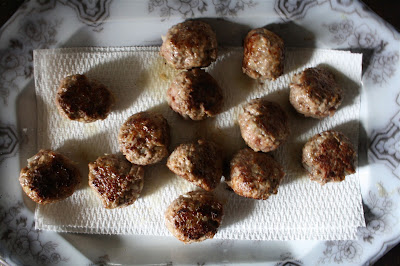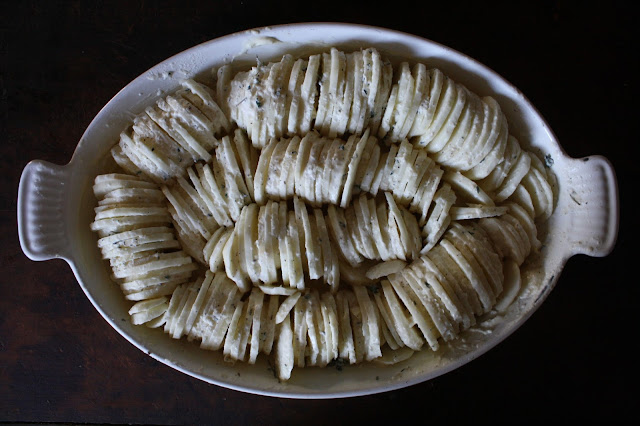"You are never too old to set another goal or dream a new dream." C. S. Lewis The arrival of a new year brings yet another opportunity to set new goals, dream new dreams. Although we don't really need to wait until January first for this to happen. In looking back at last year, I wasn't anywhere near committing to returning to running. Thinking about it yes. But thinking about something and doing something about it are two completely things. Truth be told, my list of things I think about doing but don't do anything about, is longer than it really should it be (you know that list, the one containing those things we aren't ready for or we have a plan for mind games we can be guilty of playing). Little did I know walking into my local running store last February would cause all of that thinking to shift into doing. The return to running brought more to my life in the last year than I had ever imagined. Even the unplanned stress fracture turned out to have at least one positive outcome (although at the time I saw the glass as half-empty). And more important than aiding Fleet Feet, Lululemon, and Athleta in meeting their fiscal goals for the year, has been being positively impacted by some new friends who have come into my life. It is often only in looking back that you realize how much more is gained when you start making your dreams your reality. Because if I had waited until I thought I was ready to run again, I would still be thinking about it instead of experiencing all of the (anticipated and unanticipated) benefits that come from running.
When I saw the recipe for Swedish Meatballs in the recent December/January issue of Food and Wine Magazine, I knew they would go on the 'make' rather go into that 'will think about, save for someday' list. For someone who loves Swedish Meatballs, it is hard even for me me to believe I have only made them a few times in my (long) life. Which translates into, I guess the recipe I was using wasn't one I was particularly enamored with.
Swedish meatballs (Köttbullar) have been considered both traditional old-world smorgasbord fare and a food served on festive occasions. Considered to be Sweden's national dish, they may have suffered an unfair identify crisis, due in large part to their 1960s cocktail party finger food reputation (but I am guessing those weren't being served with lingonberry jam). If you didn't grow up in a family celebrating all things Swedish, were too young to have experienced the 60s, don't buy frozen Kottbullars from IKEA, or had never driven hundreds of miles to eat at Al Johnson's Swedish Restaurant in Door Country, Wisconsin, you may not know what a deep love and strong craving for really good Swedish Meatballs feels like. But not to worry, all of that is about to change.
Early in Scandinavian history, beef was considered a luxury item, thus causing meatballs to be put into the category of a highly prized dish. Since its' first written cookbook appearance, numerous regional variations of Swedish meatball recipes are now reflective of ingredient availability. Although most are made with various ratios of meats (beef and pork), seasoned with spices (almost always allspice and sometimes nutmeg), and covered in a broth based cream gravy. When not served as an appetizer, Swedish meatballs are often served with buttered potatoes or egg noodles. And whether lingonberry jam is a required, obligatory accompaniment to them or not, it should be.
So let's talk about the beef and pork ratio in these Swedish Meatballs. There seems to two common options. Either 1:1 or 2:1. Those that advocate for the 2:1 option assert the meatballs are springier and more flavorful if the amount of beef is double that of the pork. However, going with a 1:1 ground chuck to ground pork option resulted in incredibly flavorful and tender meatballs. So without doing side by side ratio taste test comparisons, I am in no position to advocate for one over the other. Although it's hard to believe these meatballs could have been better.
Some Swedish meatballs call for sautéing the onions before adding them to the meatball mixture. If you mince them finely, they will soften to the point where you notice their flavor but will not experience their crunch.
Some Swedish meatballs call for sautéing the onions before adding them to the meatball mixture. If you mince them finely, they will soften to the point where you notice their flavor but will not experience their crunch.
Early recipes for making Swedish Meatballs call for mixing them by hand (but then again they didn't have the options we have today). Using a standing mixer with a paddle attachment helped to create a cohesive meatball mixture and one not causing the meatballs to toughen when cooked. These savory meatballs were seasoned with allspice and freshly grated nutmeg, in addition to kosher salt and black pepper. The combination and amounts of spices were perfect and I wouldn't dare alter them.
As you know, I am a big fan of using an ice cream scoop every time I make cookies and/or meatballs. More than being slightly less messy, it helps to create perfect same size, same weight balls of delishness. The F&W recipe called for creating 1 1/2 ounce portions but 1 1/4 ounce size meatballs worked perfectly. In the future I might make 1 ounce meatballs if I was serving them as an appetizer at a larger gathering (making certain to adjustment cooking time).
All of the ice cream scooped meatballs were eventually rolled by hand (because meatballs are supposed to be round, right?), they were sautéed in a combination of unsalted butter and extra virgin olive oil for a total of approximately four minutes.
The meatballs were cooked in two batches and drained on paper towels while the sauce was prepared. After draining the 'fat' from the meatballs, a roux was created with unsalted butter, extra virgin olive oil, and flour until it became lightly browned. When whisking in the low sodium chicken broth and heavy cream, I would suggest you begin by adding the chicken broth first as the roux will seize slightly as soon as the liquid is added. Once the sauce begins to boil you return all of the partially cooked meatballs to the pan.
My cooking time for the meatballs after they were simmering in the sauce was closer to 15 instead of the 8-10 minutes suggested. A meat thermometer came in handy to test for their doneness (160 degrees F).
After removing only the cooked meatballs from the sauce, freshly chopped parsley and dill were added to the sauce before it was poured over the platter of Swedish Meatballs. This sauce was heavenly and from my palate's perspective didn't need to be seasoned with any additional kosher salt and black pepper.
The combination of flavors from the slightly tart, sweet jam with the warm savory meatballs was practically dizzying. When you now think of Swedish Meatballs, you also need to think of Lingonberries. They should be considered one of those inseparable food combinations. Because Swedish meatballs without lingonberries would be like having a vanilla ice cream sundae without the hot fudge, eating buttermilk pancakes without a large dollop of softened butter, or enjoying buffalo chicken wings without the blue cheese dip. And the good news? Nowadays lingonberry jam (the Felix brand) can easily be found at some grocery stores, at IKEA, at World Market, and of course, on Amazon. Of course, feel free to take a trip to Sweden to pick some lingonberries up.
It is quite possible some of you started the new year without any immediate plans to make Swedish Meatballs (with Lingonberry Jam) or getting your Swedish Meatball fix from either your favorite restaurant or at the dinner table of one of your Swedish friends. Heck, they may have not even been on your list of things you have been thinking of making. However, I hope this first blog posting of 2016 is the Swedish Meatball divine intervention you weren't expecting. Who knows what unintended benefits await you when you make them for family and/or friends!
RecipeIt is quite possible some of you started the new year without any immediate plans to make Swedish Meatballs (with Lingonberry Jam) or getting your Swedish Meatball fix from either your favorite restaurant or at the dinner table of one of your Swedish friends. Heck, they may have not even been on your list of things you have been thinking of making. However, I hope this first blog posting of 2016 is the Swedish Meatball divine intervention you weren't expecting. Who knows what unintended benefits await you when you make them for family and/or friends!
Swedish Meatballs with Lingonberries (ever so slight changes to Food and Wine's Swedish Meatballs with Cranberry Relish recipe, December 2015/January 2016 issue)
Ingredients
4 1/2 ounces whole wheat bread, coarsely torn (about 3 or 4 slices of a good quality whole wheat bread)
1/2 cup whole milk
12 ounces ground beef, preferably 85% lean (recommend using ground chuck)
12 ounces ground pork, preferably the shoulder if you can get it
1/2 cup minced yellow onion
1 large egg, lightly beaten
1/4 teaspoon ground allspice
1/4 teaspoon freshly grated nutmeg
1 1/2 teaspoons kosher salt, plus more for finishing
1/2 teaspoon black pepper, plus more for finishing
2 Tablespoons unsalted butter, divided
2 Tablespoons extra-virgin olive oil, divided
1 Tablespoon all-purpose flour
1 cup low-sodium chicken broth
1/4 cup heavy cream (at least a 17% fat content)
2 Tablespoons chopped fresh flat-leaf parsley
2 Tablespoons chopped fresh dill
Lingonberries (recommend Felix brand)
Directions
1. In a stand mixer fitted with a paddle attachment, soak the bread and milk until softened (approximately 5 minutes). Mix on low speed until blended and uniform, about 30 seconds.
2. Add ground beef, pork, minced onion and egg. Mix on low speed until incorporated into the bread mixture.
3. Sprinkle in salt, pepper, allspice, and nutmeg. Increase speed to medium and mix until incorporated, approximately 30 seconds.
4. Using an ice cream scoop, for 1 1/4 to 1 1/2 ounce portions of the meatball mixture. Set meatballs on a parchment paper lined baking sheet. When finished scooping all of the meatballs, roll into balls.
5. Line a platter with paper towels and set aside.
6. Heat a 12 inch skillet over medium-high heat. Add 1 Tablespoon of the unsalted butter and 1 Tablespoon of the extra-virgin olive oil. When butter has melted, add half of the meatballs and turn down heat to medium. Cook meatballs until browned on the bottom, approximately 2 minutes. Flip meatballs over and cook for an additional 2 minutes. Transfer meatballs to platter. Repeat with remaining meatballs.
7. Pour off the fat and return the skillet to medium heat. Add the 1 Tablespoon of the unsalted butter and 1 Tablespoon of the extra-virgin olive oil. When butter has melted, add flour, and cook stirring with a wood spoon until the mixture has turned a light brown (approximately 60-90 seconds).
8. Slowly whisk in chicken stock and heavy cream. Stir until smooth. Bring to a boil.
9. Immediately add meatballs, reduce heat to medium and simmer shaking the pan occasionally until the meatballs cook through (160 degrees F) and the sauce thickens further, approximately 10-15 minutes. Note: To insure doneness, recommend using a meat thermometer.
10. Transfer meatballs to serving platter. Season with salt and pepper if necessary. Stir in chopped herbs (parsley and dill) into the sauce. Pour sauce over the meatballs and serve immediately with a side of lingonberries.
Notes: (1) Can be served as an appetizer or main course. If serving a main course, serve over buttered potatoes or egg noodles. (2) If serving as an appetizer, reduce size of meatballs to 1 ounce and make adjustments in cooking time as necessary.





























































